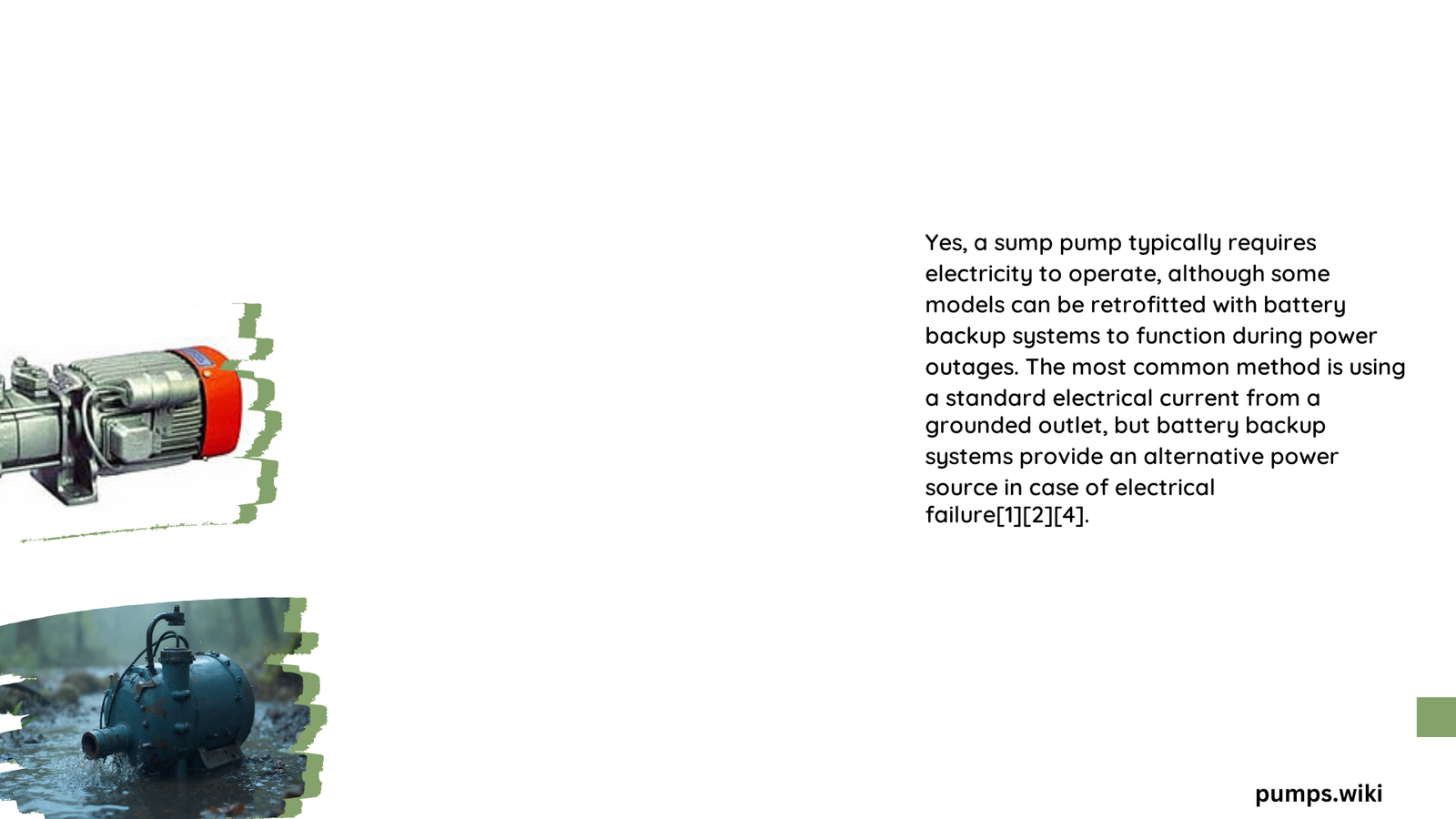Sump pumps are critical home protection devices that require electricity to function effectively. These essential water management systems rely on electrical power to detect water levels, activate pumping mechanisms, and remove excess water from basements and crawl spaces. Understanding their electrical requirements is crucial for homeowners seeking reliable flood prevention strategies.
What Power Do Sump Pumps Consume?
Sump pumps have varying electrical demands based on their type and horsepower. Here’s a comprehensive breakdown of their power consumption:
Wattage Requirements by Pump Type
| Pump Type | Operating Watts | Startup Watts |
|---|---|---|
| Pedestal Pump | 500-1,000 W | 1,200-1,500 W |
| Submersible Pump | 1,000-1,500 W | 1,300-2,900 W |
| 1/3 HP Pump | 800-900 W | 1,400-1,800 W |
| 1/2 HP Pump | 1,000-1,050 W | 2,150-4,100 W |
Why Do Sump Pumps Need Electricity?
Sump pumps require electricity for several critical functions:
- Water Level Detection
- Electrical sensors continuously monitor water levels
-
Trigger mechanism activates when water reaches specific threshold
-
Pumping Mechanism
- Electric motor powers impeller rotation
- Generates suction and water displacement
-
Moves water from sump pit to exterior drainage areas
-
Automatic Operation
- Eliminates manual intervention
- Provides 24/7 flood protection
- Ensures consistent water management
Can Sump Pumps Work During Power Outages?

Homeowners have multiple options for maintaining sump pump functionality during electrical interruptions:
Battery Backup Solutions
- Portable Power Stations
- Provide temporary electrical supply
- Can run sump pumps for 2-4 hours
-
Examples: VTOMAN Jump 1800, EcoFlow DELTA 2 Max
-
Dedicated Battery Backup Systems
- Specifically designed for sump pumps
- Automatic switchover during power loss
- Typically provide 8-12 hours of continuous operation
Alternative Power Sources
- Solar-Powered Systems
- Use photovoltaic panels
- Charge batteries for pump operation
-
Environmentally friendly option
-
Generators
- Provide consistent electrical supply
- Recommended wattage: 2,000-5,000 watts
- Can handle both running and startup pump requirements
Factors Affecting Electrical Needs
Several variables influence a sump pump’s electrical consumption:
- Pump Horsepower
- Frequency of Water Removal
- Pump Age and Maintenance
- Water Table Conditions
- Basement Size and Configuration
Recommendations for Efficient Operation
- Choose a pump matching your specific water management needs
- Invest in battery backup systems
- Perform regular maintenance
- Consider generator or solar alternatives
- Monitor electrical connections and components
Cost Considerations
- Average electricity cost: $10-$30 per year
- Battery backup systems: $200-$600
- Generator options: $400-$1,500
Conclusion
Electricity is fundamental to sump pump functionality. While they require consistent electrical power, multiple backup solutions ensure continuous water management and basement protection.
